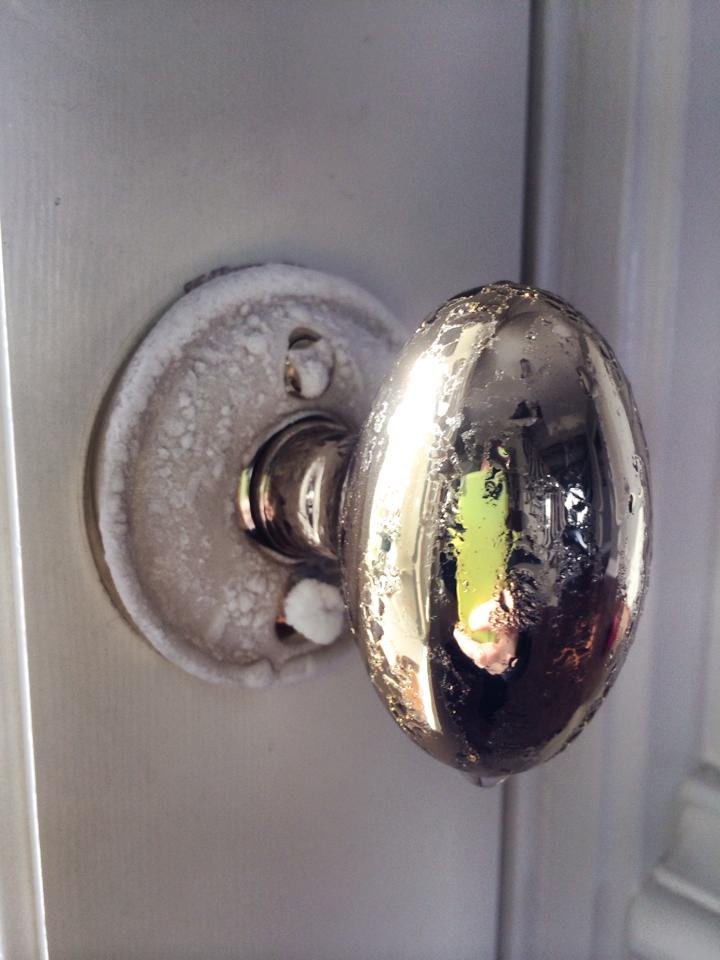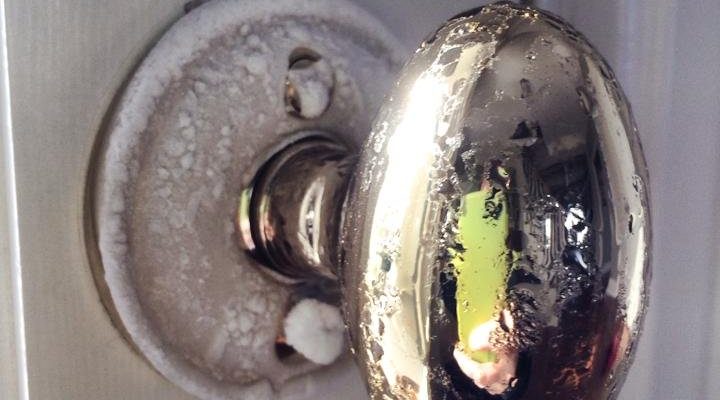
Dealing with iced-over door locks, frozen handles, and jammed deadbolts can turn into a real puzzle. Modern door hardware, whether it’s a traditional keyed lock or one of those sleek electronic keypads, isn’t always designed for the wrath of Mother Nature. Common brands like Schlage, Kwikset, or Yale each have their quirks and weak spots when the weather turns nasty. Understanding how ice affects these mechanisms can save you hours of stress—and maybe even your morning coffee date.
Why Does Ice Form on Exterior Door Hardware?
Here’s the thing: door hardware sits outside, fully exposed to whatever winter throws at it. When temperatures drop and there’s moisture in the air from melting snow or freezing rain, water creeps into every little crack and crevice of your door lock, handle, or even keypad. Once the mercury falls below freezing, that water solidifies, and suddenly you’ve got more than just a chilly welcome home.
You might be wondering why some doors freeze up more than others. Part of it comes down to the direction your door faces—north-facing doors seem to get the worst of it, thanks to limited sunlight. The finish and style of your hardware play a role too. Raw metal knobs can chill faster than ones with a protective coating, letting condensation and frost build up more easily. Even the type of weatherstripping around your frame can affect how much moisture sneaks inside.
What’s especially tricky is that ice doesn’t just coat the outside. It works its way inside the lock cylinder, the latch, and even under the trim plates. If you have an electronic lock, moisture can sneak past the keypad buttons and freeze internal gears or batteries. So, it’s not just about the ice you can see—it’s the stuff you can’t that causes real trouble.
Common Signs of Ice-Damaged Door Hardware
Honestly, most people don’t think about their door hardware until it stops working. But ice damage shows up in a few specific ways you can spot before things get really bad.
- Stiff or unresponsive locks: If your key barely turns or the thumb latch resists, that’s a clear sign something’s frozen up inside the mechanism.
- Sticky or immovable doorknobs: Sometimes, the handle or lever won’t move at all—or only with lots of force, which risks breaking it.
- Buttons that won’t press on keypads: For brands like Schlage or Yale, frozen water under the keypad can make keys stick, beep erratically, or simply not work.
- Condensation and frost buildup: If you see thick frost on or around the lock, it means the hardware is trapping moisture inside, priming it for freezing.
These symptoms may show up after a single icy night, or they can build up over weeks of freeze/thaw cycles. The trick is not to ignore them, since forcing a stuck lock is one of the top ways people end up needing a full replacement—not just a quick fix.
Step-by-Step: Thawing Out a Frozen Door Lock
Let me explain: when you’re locked out by ice, the goal isn’t to brute-force your way in. Rushing or using the wrong technique can crack the lock housing, strip the key, or damage electronic contacts—especially with modern, battery-powered locks.
Here’s the safest way to thaw a frozen lock:
- Warm the key: Use a lighter or run it under hot water (then dry quickly) before gently pushing it into the lock. The heat can melt ice inside the cylinder.
- Use de-icer sprays: Lock de-icer, available at most hardware stores, contains alcohol and lubricant. Spray into the keyhole or the edges around the handle, then wait a minute before trying the lock.
- Hair dryer method: If you can plug in nearby, aim a hair dryer at the lock for a few minutes. Keep the airflow moving to avoid overheating the finish or electronics.
- Avoid hot water directly on the lock: It can seep inside, refreeze, and make the problem worse. Stick to controlled, gentle heating.
Patience matters here. Never use sharp objects to “chip” away ice in the lock—this can easily damage high-security pins or electronic touchpads. If you’re in a bind and nothing works, a locksmith might be your best bet, especially for higher-end smart locks.
What to Do If the Handle or Deadbolt Is Physically Damaged
Sometimes, ice isn’t content just to freeze things up—it can physically damage parts of your door hardware. Maybe you tried forcing the handle and heard a nasty snap, or the deadbolt just won’t retract even after thawing.
The next step is to figure out what broke. For most standard handles (like those from Kwikset or Schlage), the inside mechanism is a mix of tiny springs and metal cams. Ice puts extra strain on these parts, causing them to bend, snap, or go out of alignment.
- For handles that spin freely or don’t engage: This means something inside the latch is likely broken. Remove the screws and open up the hardware to check for bent or warped pieces.
- If the deadbolt won’t move: Even after the ice melts, a stuck or bent bolt usually needs inside access. Take off the interior faceplate and inspect for obvious damage or pieces out of place.
- With electronic locks: Check the battery compartment and wiring. Sometimes water intrusion causes corrosion or short circuits. If things look rusted or gunked up, it’s probably time for a replacement.
In my experience, it’s better to replace a badly damaged handle or deadbolt instead of trying to “patch” it, especially if your door is a main entry point. Repairs might work short-term but leave you vulnerable later.
Preventing Future Ice Buildup on Door Hardware
After you’ve wrestled with a frozen lock once, you’ll want to avoid it ever happening again. Luckily, a few small adjustments can make a world of difference.
- Lubricate your locks: Use a graphite-based lubricant (never regular oil) inside the keyhole and moving parts. This keeps moisture from settling and freezing in place.
- Add a lock cover: Simple rubber or plastic covers snap over your doorknob and protect it from direct snow or rain.
- Upgrade your weatherstripping: Cracked or missing seals let cold air and moisture in. Replace old weatherstripping around your door frame, especially at the top and along the latch edge.
- For electronic locks: Make sure battery covers are tightly sealed. Consider tape or weatherproofing pads around seams if your model allows.
You might also want to occasionally check screws and mounting hardware for tightness. Ice can work things loose over time, letting in more moisture next season. As tedious as it sounds, a quick five-minute inspection every fall saves a lot of frozen mornings.
Comparing Traditional vs. Electronic Exterior Door Hardware in Cold Weather
You might be wondering: is it better to have an old-school key and knob, or a fancy electronic lock when winter hits? Honestly, each has its strengths and weak spots when it comes to ice damage.
- Traditional keyed locks: These are often easier to thaw in a pinch—just warm the key, and you’re back inside. However, they’re more vulnerable to repeated freeze/thaw cycles, which can wear out internal pins over time.
- Electronic keypads or smart locks: Brands like Schlage or Yale often seal battery compartments and button panels against water, but nothing’s perfect. If water gets in, electronics can short out or freeze solid, and replacement parts usually aren’t as cheap or available as standard locks.
- Mechanical push-button locks: These are a hybrid: not as vulnerable to battery issues, but still at risk if water seeps into the moving parts behind the buttons.
The truth is, there’s no universal winner. If you’re in a deep-freeze climate and want less troubleshooting, stick with heavy-duty traditional locks and be diligent about weatherproofing. If you value convenience, pick an electronic lock but check seals and batteries more often—especially before a big winter storm.
When to Call a Professional for Exterior Door Hardware Troubleshooting
No one wants to admit defeat to frozen hardware, but sometimes calling a locksmith is the safest call. If you’ve followed every DIY trick—used de-icer, tried gentle warming, checked batteries—and you still can’t get your lock working, it’s time for expert troubleshooting.
Professionals can:
- Disassemble and clean the lock: Especially if it’s become packed with ice, dirt, or corrosion inside the cylinder.
- Reset electronic locks: If your Schlage or other brand lock isn’t responding, a locksmith can often perform a reset, re-sync the code, or pair a new remote.
- Install a weatherproof replacement: They’ll know which models stand up best in your area’s climate and can install universal or brand-specific options as needed.
Sometimes, a timely professional repair is cheaper than wrestling with a stuck lock and damaging your door—or standing outside in the cold for hours.
Smart Upgrades: Modern Solutions to Prevent Ice Damage
If you’re ready to outsmart winter, there are a few smart upgrades worth considering. Today’s exterior door hardware comes in all shapes—some designed specifically for tough climates.
- Choose all-weather finish: Look for models with rust-proof coatings and sealed seams. Many higher-end Kwikset and Schlage handles have weather-resistant lines built for harsh winters.
- Bluetooth-enabled smart locks: These often use touch sensors instead of physical buttons, which can cut down on freeze-related malfunctions. Just remember, they still need tight seals to keep elements out.
- Built-in lock heaters: Rare but available for extreme climates, these systems gently warm the lock cylinder using low-voltage wiring—no more frozen tumbler worries.
Making a small investment up front can mean years of trouble-free winters. Of course, even the fanciest hardware needs regular checks and a bit of preventive care, but technology can tip the odds in your favor.
Wrapping Up: Keep Your Exterior Doors Trouble-Free All Winter
Ice and door hardware will always be rivals, but now you’re equipped to tip the fight in your favor. From understanding why ice forms and spotting early warning signs, to knowing how to thaw locks, fix damage, and prevent future freezing, you’ve got practical solutions at hand. Whether you’re rocking a classic keyed deadbolt or a high-tech Schlage smart lock, the basics stay the same: keep things clean, dry, and well-sealed. A little preparation and the right troubleshooting steps make winter a lot less stressful—and the next time you hear a cold snap in the forecast, you’ll know exactly what to do.
